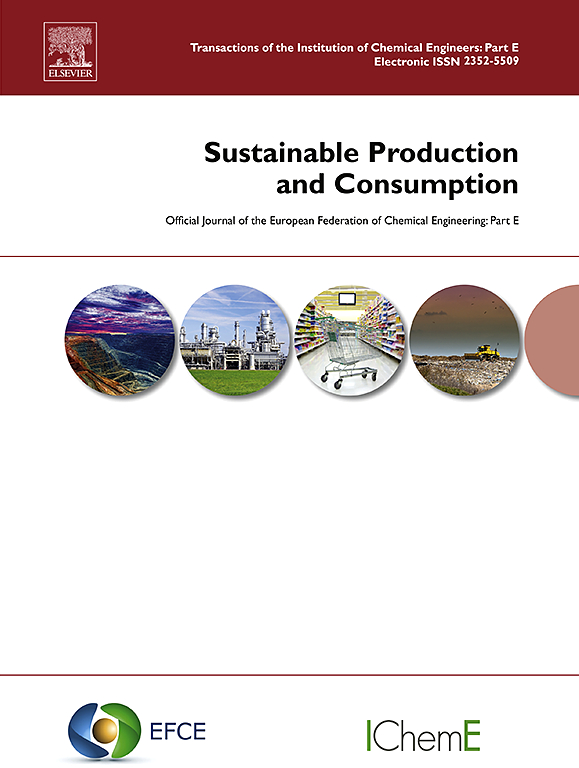Multi-measure pathways for achieving carbon-neutral cement production
IF 9.6
1区 环境科学与生态学
Q1 ENVIRONMENTAL STUDIES
引用次数: 0
Abstract
Greenhouse gas (GHG) emissions from cement production continue to rise, making it the second-largest source of industrial GHG emissions. In this study, we develop a framework to evaluate several decarbonization technologies and scenarios to achieve carbon-neutral cement production. A case study for Canada was conducted using this developed framework. Decarbonization technologies are grouped into six categories (energy efficiency, fuel switching, alternative raw materials, alternative binders and chemistries, carbon capture and storage, and cement carbonation) and each is evaluated using a bottom-up technology-explicit energy model. The results show that carbon-neutral cement production can be achieved before 2050 with marginal abatement costs of −17 to −34 CAD/t CO2e and cumulative GHG emissions reductions of 199–242 Mt. CO2e, based on a carbon price of 170 CAD/t CO2 by 2030. The results are comparable to roadmaps from other jurisdictions but with some important distinctions. Canada continues to have a higher clinker/cement ratio and lower alternative fuel consumption than other jurisdictions, meaning carbon capture and storage is expected to play a larger role in reducing GHG emissions. Furthermore, carbon neutrality cannot be achieved without carbonation or a similar offset. Therefore, it is important that all cement-producing regions begin formalizing a framework to guide the calculation of carbonation impacts and compile the information to support those calculations. Finally, a sensitivity analysis concluded that carbon pricing is required in every carbon-neutral scenario to achieve negative GHG emissions abatement costs.
实现碳中和水泥生产的多措施途径
水泥生产产生的温室气体(GHG)排放量持续上升,使其成为工业温室气体排放的第二大来源。在本研究中,我们开发了一个框架来评估几种脱碳技术和方案,以实现碳中和水泥生产。对加拿大进行了一个案例研究,使用了这个已开发的框架。脱碳技术分为六类(能源效率、燃料转换、替代原材料、替代粘合剂和化学品、碳捕获和储存以及水泥碳化),每一类都使用自下而上的技术明确能源模型进行评估。结果表明,在2050年之前实现碳中和水泥生产,边际减排成本为- 17至- 34加元/吨二氧化碳当量,根据到2030年碳价格为170加元/吨二氧化碳当量,累计温室气体排放量为199 - 2.42亿吨二氧化碳当量。结果与其他司法管辖区的路线图相当,但有一些重要的区别。与其他司法管辖区相比,加拿大的熟料/水泥比更高,替代燃料消耗更低,这意味着碳捕获和储存有望在减少温室气体排放方面发挥更大的作用。此外,如果没有碳酸化或类似的抵消,就无法实现碳中和。因此,重要的是,所有水泥生产地区都要开始正式制定一个框架,以指导碳酸化影响的计算,并汇编支持这些计算的信息。最后,敏感性分析得出结论,在每一个碳中和情景中,要实现负温室气体减排成本,都需要碳定价。
本文章由计算机程序翻译,如有差异,请以英文原文为准。
求助全文
约1分钟内获得全文
求助全文
来源期刊

Sustainable Production and Consumption
Environmental Science-Environmental Engineering
CiteScore
17.40
自引率
7.40%
发文量
389
审稿时长
13 days
期刊介绍:
Sustainable production and consumption refers to the production and utilization of goods and services in a way that benefits society, is economically viable, and has minimal environmental impact throughout its entire lifespan. Our journal is dedicated to publishing top-notch interdisciplinary research and practical studies in this emerging field. We take a distinctive approach by examining the interplay between technology, consumption patterns, and policy to identify sustainable solutions for both production and consumption systems.
 求助内容:
求助内容: 应助结果提醒方式:
应助结果提醒方式:


